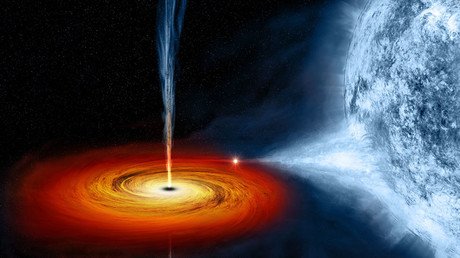‘God of chaos’: Milky Way star on the brink of massive gamma-ray supernova explosion
A star 8,000 light years from Earth is on the verge of a huge supernova explosion, which could produce the Milky Way’s first gamma-ray explosion, a dangerous and extremely energetic event.
Australian scientists at the University of Sydney discovered the rare ‘God of chaos’ star, which they say could produce the Milky Way’s first known gamma-ray burst, a lethal combination of dust and gas mixed with wind as fast as 12 million km/ph, which is one of the most extreme energetic events after the Big Bang.
The researchers published their findings in the latest issue of the journal ‘Nature Astronomy’. ‘God of chaos’ is part of a two-star system named after the Egyptian serpentine Apep.
Apep comprises of two hot, luminous stars which orbit each other every hundred years or so. Scientists say one of the stars has the perfect conditions to create a gamma-ray burst which has the potential to strip Earth’s ozone from the atmosphere, drastically increasing our exposure to UV light from the sun.
Fortunately, the star doesn’t appear to be aimed at Earth, however researchers say they “can’t be certain what the future has in store” for Apep.
“The system might slow down enough so it explodes as a normal supernova rather than a gamma-ray burst. However, in the meantime, it is providing astronomers a ringside seat into beautiful and dangerous physics that we have not seen before in our galaxy,” said leader of the research group Professor Peter Tuthill.
The study was conducted using the Anglo-Australian Telescope, and the Very Large Telescope in the Atacama Desert, Chile, with the help of researchers at the University of Edinburgh, University of Sheffield and the University of New South Wales.
Like this story? Share it with a friend!















